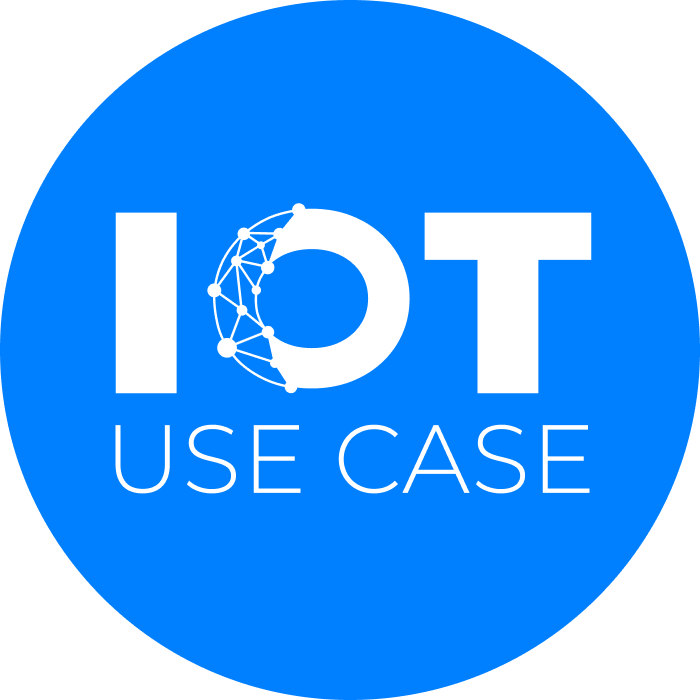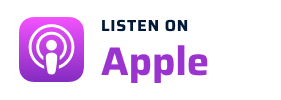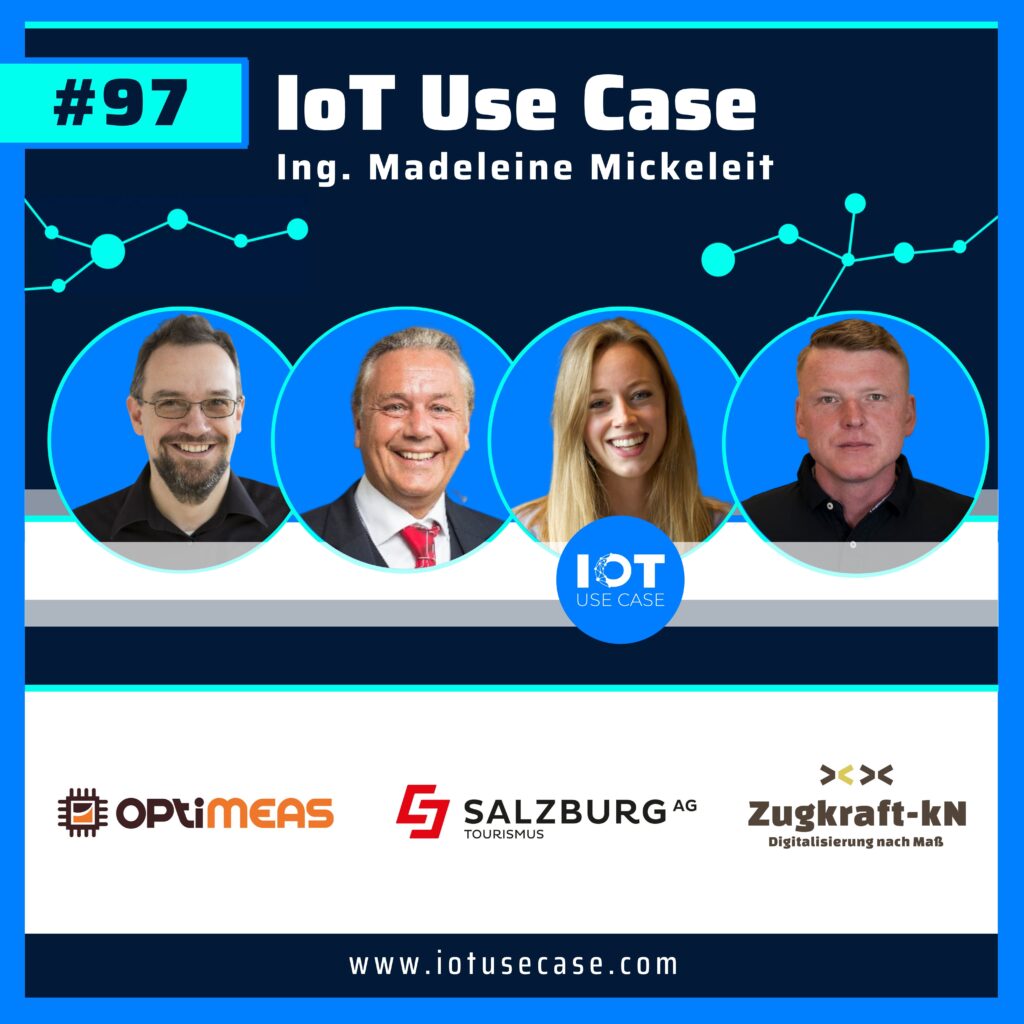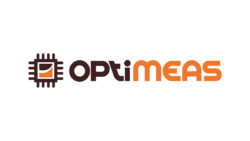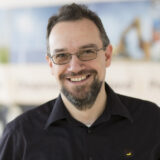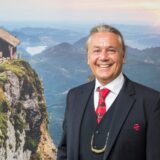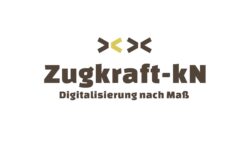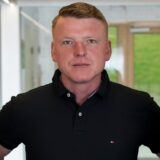With this podcast episode we bring a piece of Austrian vacation feeling directly to our home. We sit together by a picturesque lake in Austria, enjoy a cool drink and embark on an exciting journey with the Schafbergbahn – towards thedigitalization of a steamlocomotiveand the challenge of bringing a “sensorless” vehicle with meaningful data into the cloud.
Episode 97 at a glance (and click):
- [11:10] Challenges, potentials and status quo – This is what the use case looks like in practice
- [20:19] Solutions, offerings and services – A look at the technologies used
- [32:26] Results, Business Models and Best Practices – How Success is Measured
Podcast episode summary
Since 1893 it has been the steepest steam rack railway in Austria – the Schafbergbahn. With its characteristic rack and pinion, the Schafbergbahn can take on inclines that would be insurmountable for conventional railways. With gradients of up to 255 ‰, it tackles a height difference of 1190 meters. The line, which is used by steam and diesel locomotives, is not electrified.
In this episode, we uncover the connection between the Schafbergbahn and the topics of IoT and retrofitting. Everything revolves around the digitalization of this ÖBB steam locomotive. How new conclusions are drawn about effective and efficient operations, where there is potential for savings, and how processes can be optimized and downtime reduced is what these podcast guests from the project tell us directly from the field.
In Episode 97 of the IoT Use Case Podcast:
- Jens-Achim Kessel (co-founder and shareholder of optiMEAS GmbH)
optiMEAS implements cloud-based solutions for monitoring any industrial asset – construction and agricultural machinery, rail and commercial vehicles, production plants and power generation. They deliver everything from sensor connectivity and rugged edge devices to cloud solutions and business model development. In the foreground: the human being.
- Bernhard Knapp (Managing Director at Zugkraft-kN.at)
Zugkraft-kN was founded to support companies like railway workshops, production companies, up to companies in the ropeway business with a clean and functional software solution.
- Mario Mischelin Managing Director – SchafbergBahn / Salzburg AG Tourismus GmbH (Guest)
Salzburg AG is the energy provider for the state of Salzburg and also supplies customers with gas, telecommunications, Internet and TV. “Salzburg Tourismus AG” was founded to integrate the tourism units of Salzburg AG into one company.
Podcast interview
There’s a vacation feeling in today’s episode! No matter where you’re listening, in this episode we sit together by the lake in Austria. The sun is shining, sitting with a cool drink or a beer and together we make our way to a railway, more precisely to the old Schafbergbahn. This is a well-known rack railway that runs through a breathtaking landscape and offers passengers an unforgettable experience, because with its so-called “rack” the Schafbergbahn is able to overcome slopes that would be insurmountable for conventional railways. The Schafbergbahn is not only an important means of transport, but also a tourist attraction of really great importance.
We’ll find out in a moment what that is, and above all, what it has to do with IoT and retrofitting and what vacation recommendation we can make right now, that’s what you’ll find out and so straight into the podcast studio to my guests! It’s Mario, CEO of Salzburg AG Tourism GmbH, a subsidiary of energy supplier Salzburg AG, Jens, co-founder and shareholder of optiMEAS Measurement and Automation Systems GmbH, and Bernhard, CEO of Zugkraft-kN GmbH.
Hello Bernhard, Jens and Mario, I’m very happy to have you on the podcast today! Bernhard, where are you and how are you doing right now?
Bernhard
Hello to the round! Today I’m still sitting in the office in Vienna, there’s a lot going on and a lot to do, but I guess everyone feels that way. Glad we all found the time to talk through this interesting topic together.
I haven’t been to Vienna for a while, greetings across the border. Jens where are you right now? Also in working from home?
Jens
I am also working from home; typically for software development. I just got new boards from a production run that I need to test, get up and running. There’s a whole lot of work on the table for today when we get through here.
By boards, you probably mean some green circuit boards.
Jens
Exactly, such green measuring modules, one of which also goes into the Schafbergbahn.
Mario, how are you doing?
Mario
I’m sitting in my office right now, having a half hour of some calm before the storm, before the stress that we’re currently having. We will soon have the opening of the new ExperienceQuarter. Two years ago we started to build a new building, which will not only be a station for the Schafbergbahn alone, but a real experience quarter. This experience quarter will have an exhibition area and a restaurant for 120 indoor and 70 outdoor seats. Things are going haywire here at the moment.
The work should go more than 24 hours a day, but nevertheless, one thing after another will be worked off, so that by the time we open on April 29, everything will be as our guests want it.
I think that by the time this episode goes online, the opening probably already took place, but I’m even more pleased that you found the time today to share some details about your project with us. I think you are located near Salzburg and at a beautiful lake I read, right?
Mario
We belong to Salzburg AG. Salzburg AG Tourismus GmbH is part of Salzburg and I would like to welcome you from the beautiful Wolfgangsee. At the moment we have blue skies, bright sunshine and I’m sitting in the office with a beautiful view and today I get to do a podcast with you.
I’ll start with you from optiMEAS: I’ve known optiMEAS for a very long time, I think since day one. You have been around for a long time and you are especially strong in realizing cloud-based solutions for monitoring a wide range of industrial assets, not only in construction and agricultural machinery, but also expert in rail/commercial vehicles, production equipment and power generation.
There, you’ll deliver everything from sensor connectivity with rugged edge devices, to cloud solutions, to working out the business model. What I find special about you is that you put people first. You notice this not only in the cooperation, but also in the customer appointments. You are a co-founder and shareholder of optiMEAS GmbH. What clients do you classically work with and did I say that correctly?
Jens
The introduction was perfect. The applications we have go in a variety of directions. At some point, we started with a measuring system for medical technology, which was a cooperation project with a university in Bern. From there, the contacts to Switzerland are also very old. We have many projects with geologists, where it is about monitoring of former mining areas, about mine monitoring and the like, up to customers from the field of refuse vehicles or vehicles in rail transport. Of course, the big names are there, but there are also a lot of small ones that are not served at all by the big suppliers for such solutions and such systems, because the vehicle fleet is far too inhomogeneous.
When it comes to the subject of rail transport, we have come full circle again, as the subject is to be a so-called “steam locomotive”.
Bernhard, you come from the company Zugkraft-kN GmbH from Austria; can you say something else about you and what I’ve been wondering all along: Does kN stand for kilo Newton?
Bernhard
In the company name, kN is not a physical quantity, but stands for Knapp und Neuteufel. Richard Neuteufel is my partner and co-founder of Zugkraft-kN GmbH.
We established in 2021 to support our customers with a clean and functional software solution. The whole thing was born out of necessity. At that time, we analyzed the market and looked for a software product ourselves, found none and made the decision: If something doesn’t exist, then we’ll just have to do it ourselves and implement it, and we created software for a railway workshop that grew with the company and now covers all areas.
Be it the management of vehicles, the workshop, warehousing, standard-compliant documentation of service and maintenance on rail vehicles, to the integration of various machines and equipment in operations. In the meantime, we are in the fortunate situation that we are also active in other industrial sectors. Not only in the railway industry but also in manufacturing companies, where Zugkraft-kN’s software solution is used as an ERP system. Or also in ropeway calculation, where our software actively supports the calculation of ropeway projects.
Jens, you serve very different use cases with optiMEAS, don’t you? Can you briefly tell us what use cases you have?
Jens
It’s definitely just a snapshot and those are definitely just a few of the projects that we have. What is perhaps quite exciting is an intelligent control system for air-conditioning systems that we have set up together with “DB Systemtechnik”. We’re all familiar with those double-decker trains that run on mass transit, and we expect them to roll up to the platform well air-conditioned, we can get on, and hopefully we can get off with the air-conditioning working at the end.
To ensure this, the railway has so far always run the air conditioning systems at full capacity. That is, when the cars went into storage, the air conditioners were always on. If anyone from the cleaning staff turned off these air conditioners, then the exact case occurred that the train was on the platform in the morning and was not cooled or preheated.
We have integrated a system with which, depending on the vehicle locations and the schedules, which are then transferred to our devices, the device itself decides on site whether it has to switch the air conditioning on or off. This will result in CO2 savings of tremendous proportions. On the other hand, it also saves several million euros in electricity costs.
And now you have set up a joint project around the steam locomotive. How does that work exactly? What did you do there?
Jens
The steam locomotive, that is on the one hand personal fascination of mine, so as a railway, model railway and especially a lover of old steam vehicles. And here the challenge is that we have a vehicle that is basically sensorless, i.e. a steam locomotive has a boiler, water is made hot, the steam drives the vehicle, and apart from a few valves and levers or controllers, I don’t have much measurement technology on such a locomotive. And to equip them in such a way that we can get reasonable measurement data for evaluation in the cloud with additional sensors is a certain challenge, and in this respect I am glad that we can do this pilot project; I think it will be exciting.
Challenges, potentials and status quo – This is what the use case looks like in practice [11:10]
Is there a personal story there, Mario? How did you get to know each other?
Mario
In 2020, we bought two more diesel-electric locomotives from the company “Stadler”. Since Bernhard worked for Stadler in Vienna, he was our contact person for problems, for questions, for maintenance, for software problems and for malfunctions. That’s when we got to know Bernhard and also came to appreciate his kind of flexible support.
He was always responsive and is always responsive. On this way we also got to know Richard from Zugkraft-kN, got suggestions for solutions, also for other technical problems or projects.
We appreciate these approaches to solutions and they have made a custom project for us. This brought us to the next step of a project planning.
Could you give our listeners an overview of what Salzburg AG Tourismus does and what your vision is for digitalization before diving into your project?
Mario
Salzburg AG is the energy provider for the state of Salzburg and also supplies customers with gas, telecommunications, Internet and TV. Salzburg AG Tourismus was founded to integrate the tourist units of Salzburg AG into a company. We are a 100% subsidiary of ‘Salzburg AG’ and call ourselves Salzburg AG Tourismus GmbH.
We own five treasures – so that’s what we call five tourist units – in Salzburg and in the area bordering Upper Austria. These include the fortress railway, the Mönchsberg elevator and the Wasserspiegel museum in the city of Salzburg and on the beautiful Wolfgangsee, the Schafbergbahn railway and the Wolfgangsee boat trip.
About the Schafbergbahn we got to know kN and try to make a bow out of a nostalgic railway, also these nostalgic locomotives. We operate steam locomotives and diesel-electric locomotives; here we have tried to work together to give steam locomotives a certain touch of digitalization as well.
It makes you want to go on vacation. I’ll make a note right away that we’ll definitely stop by there. If you look at it on Google, it’s incredibly beautiful scenery and incredibly great surroundings! There you can plan your next vacation.
Mario
You can definitely plan your next vacation there! We are a tourist destination, we live for our guests and we are always happy when we get visitors. We have many guests, thank God, and we want to offer these guests more than in the past.
Today we are talking about a digitalization project, a so-called “steam locomotive”; I believe it is the Schafbergbahn. What kind of track is that exactly?
Mario
There are three rack railways in Austria and one of them is the Schafbergbahn; this is also the most famous, I dare to say here. The Schafbergbahn starts in Sankt Wolfgang and leads to the 1783 meter high Schafberg, overcomes a difference in altitude of 1200 meters with a maximum gradient of 26%. That is, it goes steeply uphill in a very short time.
The destination is the mountain station at 1783 meters on the Schafberg and from there you have an incredible view over the Salzkammergut to the Salzburger Land and parts of Upper Austria.
What are some potentials that you have seen? A railway like this has to be operated, and there are probably certain maintenance cycles involved.
Mario
We are trying to evolve. Here, digitalization is also a point where we want to attach ourselves and hope that in the course of these projects we also expect some efficiency, savings and workload reduction. That’s why it’s a very exciting project, and when kN approached us to think about such a project, they were immediately enthusiastic, because it’s nothing ordinary to digitalize a locomotive from 1893.
This is about, for example, the conclusions in the company? How is the railway operated?
Mario
Exactly, we have steam locomotives from 1893, we have steam locomotives from 1991 and we have diesel-electric locomotives from the 21st century, i.e. from 2010 to 2020.
All these locomotives have a wide variety of maintenance cycles, different maintenance times and issues. We are starting the project with the 130-year-old steam locomotives; we want to extend this to the other vehicles as well.
I think it’s also about inspection times, for example, when main inspections take place, what the potential is there.
Do you have some examples of what data could potentially be relevant, or already is for this project, coming out of such a steam locomotive?
Mario
Basically, we are in operation for nine months, and in the winter we do maintenance from January to mid-April. These are examinations of the locomotives that are not analyzed in great detail, but rather the entire locomotive is simply disassembled, cleaned, faulty parts replaced and reassembled.
It’s always done that way, has always been done that way, and especially in the course of this project, we expect to get data so that we can focus specifically on certain things.
Data would then be operating data or consumption data such as heating oil or whatever is used. Or what are these data for example?
Mario
Exactly, these are data like normal wear parts. Our big goal is to work more efficiently and economically.
Solutions, offerings and services – A look at the technologies used [20:19]
What have been technological requirements for these solutions? First Bernhard, what was relevant from your point of view in the implementation and then Mario.
Bernhard
In total, we have more than ten measuring points, which we query analogously. These are different pressures, i.e. water pressure, boiler pressures or pressure of the back pressure brake and also temperature of the back pressure brake when driving the locomotive downhill.
It was interesting to install all the sensors correctly and well on this beautiful piece, on this beautiful locomotive. Wiring the whole thing appropriately and safely was important to capture all the data. Various sensors including GPS antennas are connected to the modules from optiMEAS and transmit data to optiMEAS cloud, where it is processed, analyzed, and subsequently sent to the maintenance software of Zugkraft-kN for the Schafbergbahn. In the digital handover book, one can see the location of the locomotive, the pressure and condition during operation, which is all monitored and analyzed. Are we really everywhere with pressures temperatures in the normal ranges, also with the lubrication system, the central lubrication system, the locomotive for all the bearings and pistons, respectively, if there are deviations that you can react quickly.
In this way, it is possible to find out whether there is potential for savings or improvements in order to be able to plan well in advance with the operating materials or with the entire locomotive.
It’s a pilot project that you’ve built together and can you make tangible in two or three sentences what you want the end result to be?
Bernhard
We wanted to show that older machines and older components can also be taken into the digital age. It is wonderful to be able to realize such a project with a steam locomotive. With this, we wanted to show: It is possible to bring old equipment or locomotives into today’s digital age, process the data cleanly, transmit it, and finally incorporate it automatically into the locomotive maintenance software.
A digital handover book, so to speak, where various operating states run automatically in the background and you can see and view exactly the operating data over the season or the corresponding period: Were we always in the green zone? Do we have any possible improvements or opportunities? What are the causes of the problems? Looking forward, to use that data cleanly and well, to bring value to ongoing operations, to maintenance.
So you said, let’s take the optiMEAS company on board, which will supply the hardware to make the whole thing work?
Bernhard
In that case, even on the gear wheel, rail or rack. With the partner or with the Schafbergbahn results in the ideal, plus the beautiful landscape there. We are looking forward to the first test drives!
There are the ten measurement points you mentioned, which are sort of the temperatures, boiler pressure and so on, how does that data go into the cloud in the next step?
Jens
If you simply imagine classically, you have a thermometer hanging outside on the balcony, you go by there two or three times a day and read this thermometer, write it somewhere in a table and get the temperature trend over the year. You can imagine it in a similar way with our systems, only not two or three times a day, but continuously, temperatures and pressures, flow, battery current, voltage, in other words everything that is present on the locomotive as a physical measured variable is recorded, digitized and then collected with the devices and with this Smart I/O family – these are our measuring modules – and stored on the vehicle continuously and gapless.
This is particularly important, because on the Schafbergbahn there is a small tunnel at the top just before the mountaintop. There, we will most likely not have a cellular connection to transmit data in real-time. And even if this is only a small section with the Schafbergbahn, with other projects these are definitely longer sections where you have no real-time or no online connection to the vehicle. That’s why, in our case, the systems always store all the data directly on the device and are transferred when you have enough time to transfer this data securely to the cloud.
These are probably fast and a lot of data points. I can imagine that some are necessary to transmit very quickly for maintenance cycles or even possible failures that could occur, that needs to be done quickly.
Jens
That’s exactly right, because if the temperature is on the balcony, it might be enough to take three readings per day; we have at least one to ten readings per second recorded as standard. In the case of very specific variables, where more dynamics are to be expected from the process, we can record 100 or even 1000 data points per second.
That is, from this edge device, processing continues to the cloud. How do you create each gateway in the cloud?
Jens
In principle, our device, which is installed outside on the locomotive, calls the server or the software in the cloud at regular intervals and says: I am the device on locomotive number XY on the Schafbergbahn and I have some data.
On the one hand, this happens every second, so that you can display the data you get in the cloud live in a web browser and watch how the vehicle drives. In parallel, there is a connection with which the recorded data is transmitted from the vehicle. You can think of it as a kind of mailbox, where the device in the cloud tells you that it has new data and the server replies at some point that it can send this data or that it should leave it there for now.
This data is such in terms of time resolution that you can actually do an analysis in history. If you have found a problem, something has broken, then you can look closely at the data before the event and then draw conclusions about what happened before.
That brings me back to the beginning, as Bernhard mentioned at the outset, you also do calculations for cable cars, for example. How do you do that in your software?
Bernhard
Our slogan at Zugkraft-kN is “We digitise your business the way you need it”. That means, what the customer needs, wishes or what really helps and supports thie, they get that from us. This is important for maintenance. For maintenance planning, our goal here is also to map everything cleanly in one software, right down to: What materials were needed for maintenance? In order to have a clean view of material consumption or wear and tear and costs here as well.
That’s where the ERP expertise that you mentioned at the beginning comes into play again. This means that you can also integrate ERP data there.
How does this analysis go exactly? In the end, what is the dashboard where Mario, for example, and his team can see where there are optimizations.
Jens
A dashboard, that’s also one of the terms that has emerged in this IoT world. First of all, this is nothing more than a kind of display board on which a wide variety of measured variables can be displayed. You can imagine it best like this: You have a large board and there are various pressure displays, temperature displays, characteristic curves and recorders in which temperature curves are displayed.
With the dashboard, there’s also the ability to not only look at the data live, like on a plant panel, like you have in a power plant or in the chemical plant, but we can also roll back in time. That is, we can look at what actually happened before a certain event or what the trend of certain quantities is.
In a steam engine in particular, we have a cylinder that is alternately pressurized with steam from the front and from the rear to set the vehicle in motion. Now you can take a close look at these steam trends and see whether they are uniform, whether they shift over time, and these are exactly the kind of trends that we are trying to detect with the measured variables that we are recording. This, in turn, provides information about which valve might be broken or which line is clogged or kinked; this can make maintenance much more efficient.
Results, Business Models and Best Practices – How Success is Measured [32:26]
In terms of cost savings, what is the business case for the team around Mario here?
Bernhard
Locomotive one is the prototype or even the test vehicle, that we can do this and implement it thoroughly, in order to then show where the potentials and possibilities are, be it in maintenance or in operation. Then, looking ahead, there will be other exciting projects that we could implement or map digitally on the Schafberg or possibly also on the lake at the ships, in order to have a good, continuous and ongoing insight into the devices or machines here; is everything really running as it should, or where can we improve or sharpen things up?
Mario, are these things that you think about as well? Apparently, there are also other topics that you guys are helping to oversee. How does that work out?
Mario
This project must clearly demonstrate that the implementation works, that something can actually be done with the data and that this data can also be used for shortening maintenance intervals, for corresponding savings and for fewer days of downtime.
Then you will definitely see a great benefit from it if one or the other is true. In any case, our goal here is to expand this project to include the other locomotives at the Schafbergbahn and to extend it for shipping as well. I see great potential there and also hope that we will continuously implement this in the coming years.
Bernhard
One thing I have to add, this just came to Richard and me last Friday during a little brainstorming session. We will also overlay all the data we collect with the weather data from St. Wolfgang or from the Schafberg in order to be able to recognize whether there are also different influences on the steam locomotive in different weather conditions or temperatures on the mountain or in the valley, which may provide conclusions for operation. That one also includes the surrounding data, and also evaluates or overlays.
This also has a major impact on maintenance and servicing issues. There may well be a correlation with the weather in that case.
Bernhard
Exactly, to have a nice and very wide data area or field to get really good use.
In the end, the implementation will also show that. That’s why I think it would be really exciting if we could get together again in a year’s time and give an update to our listeners on what’s happened and where you are.
Therefore, a heartfelt thanks to you for this deep insight into where the goals are for you. With that, I would turn the last word over to you guys.
Jens
I also found it very exciting that we could introduce something this way. I would be happy to actually look in a year’s time to see what has come of it. Nearby listeners are welcome to take a closer look at the Schafberg!
Bernhard
It would certainly be nice if there are interested parties who became attentive after listening to the podcast. We still have a few days, April 29 is the start of operations at Schafberg this year; the locomotive must be up to speed by then. Then we hope for an interesting start of operations and a good season at Schafberg, that we can collect a lot and good data.
Mario
Also from my side a project where you try to represent a 130 year old steam locomotive digitally, will be a very exciting project and I’m really looking forward to it. Also in view of the fact that we have continuously invested in the infrastructure on the mountain and on the lake and in vehicles in recent years. An annual transport of almost 850,000 passengers at the Wolfgangsee proves us right. We hope that in the future we will be able to welcome many guests from home and abroad here in our new adventure quarter and bring them closer to the Schafberg and Lake Wolfgang and, of course, the Salzkammergut.
Count me in! See you on-site and a heartfelt thank you to all of you! Have a great rest of the week. Take care!
Likewise thank you!
